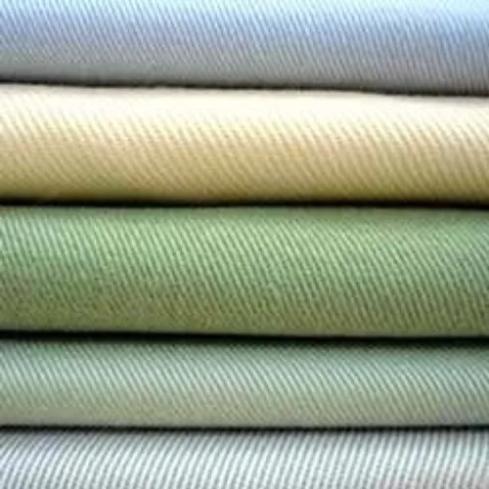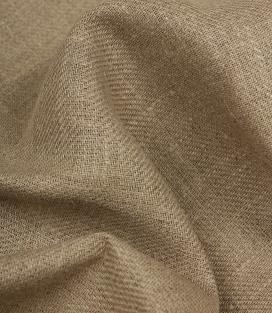
Understanding Twill Fabric
Twill is not a type of fabric - it is a type of weave that produces a pattern of diagonal ribs or lines on the surface of the fabric. This weave is achieved by passing the weft thread (the diagonal threads) over one or more warp threads (the vertical threads), then under two or more warp threads, to create the characteristic diagonal pattern
This method of weaving results in a textile that is:
- Durable: Twill is tightly woven, making it resistant to wear and tear.
- Opaque: The weave provides more coverage than plain weaves, making it ideal for upholstery.
- Flexible and Drapable: It tends to hang well, allowing it to contour around furniture pieces with ease.
- Soil-Resistant: The diagonal weave helps to hide stains and signs of wear
Common types of twill fabrics include denim, gabardine, and tartan fabric, all hard-wearing materials that are especially popular in British heritage interiors.
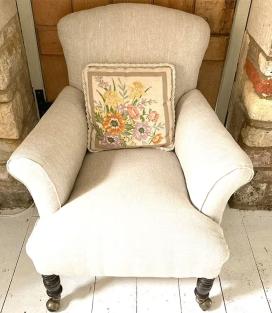
Why Twill Is Ideal for Upholstery
When choosing a fabric for upholstery, longevity and visual appeal are top priorities. Twill is a great option because of its innate toughness and ability to retain structure even after extended use. Here’s why it’s an excellent choice:
1. Strength and Longevity
The tight weave of twill means it has a high rub count in the Martindale Test and can withstand daily use. It is a particularly good choice for furniture that sees a lot of action, such as sofas, dining chairs, or footstools. Its resistance to fraying also means your pieces will look fresh for longer. You can see more about the Martindale Rub Test in our blog.
2. Easy to Work With
Twill's natural flexibility allows upholsterers to work around curves, edges, and tufts without compromising the fabric’s integrity. This makes it a favourite for both novice DIYers and seasoned professionals.
3. Soft Texture
Twill’s diagonal weave adds a subtle texture that enhances the depth and richness of any fabric. It produces a beautifully soft weave that works well when used with solid colours or bold patterns like checks and plaids.
4. Great for Patterned Designs
Fabrics with twill weaves include the timeless tartan fabric. Tartan’s rich heritage and striking criss-cross pattern look particularly beautiful when paired with the texture of a twill weave, offering a warm and inviting finish.
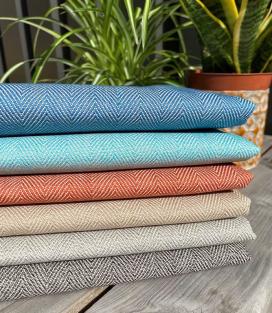
Incorporating Twill Fabric in Your Interiors
Twill fabric is incredibly adaptable and suits a wide range of interior design styles. Whether you’re going for a classic country look or a modern industrial feel, there’s a way to use twill to enhance your space.
Traditional Charm with Tartan
Tartan fabric is one of the most iconic twill weaves and is synonymous with heritage style. Its structured pattern and deep colourways bring an element of sophistication to any room. Use tartan fabric on accent chairs, ottomans, or even curtains to create a cosy yet imposing ambience. We have a large range of beautiful tartan fabrics so you can find the perfect match for your style.
Modern Minimalism
While tartan may be the face of traditional interiors, solid twill fabrics in muted tones - such as grey, navy, or taupe - are perfect for minimalist schemes. The texture adds visual interest without overwhelming the simplicity of modern furniture designs.
Mixing Patterns and Solids
Twill’s understated texture makes it a perfect base for pattern play. Pair a bold tartan fabric with a plain twill upholstery for a balanced look. Or choose a traditional herringbone fabric for a more understated, but equally interesting finish
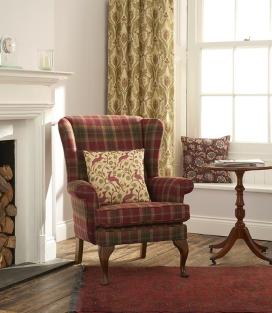
Twill Fabrics For All Types of Upholstery & Soft Furnishings
At Just Fabrics, we stock a well-loved Linen Twill fabric, which is perfect for curtains, blinds and occasional upholstery, as well as an extensive collection of tartan fabric in various colours and weights. Whether you’re reupholstering a treasured antique or refreshing a modern piece, we have the perfect material to suit your vision and budget.
Explore our curated selection of tartan fabric and other fabric for upholstery at Just Fabrics, and start transforming your furniture with confidence.



